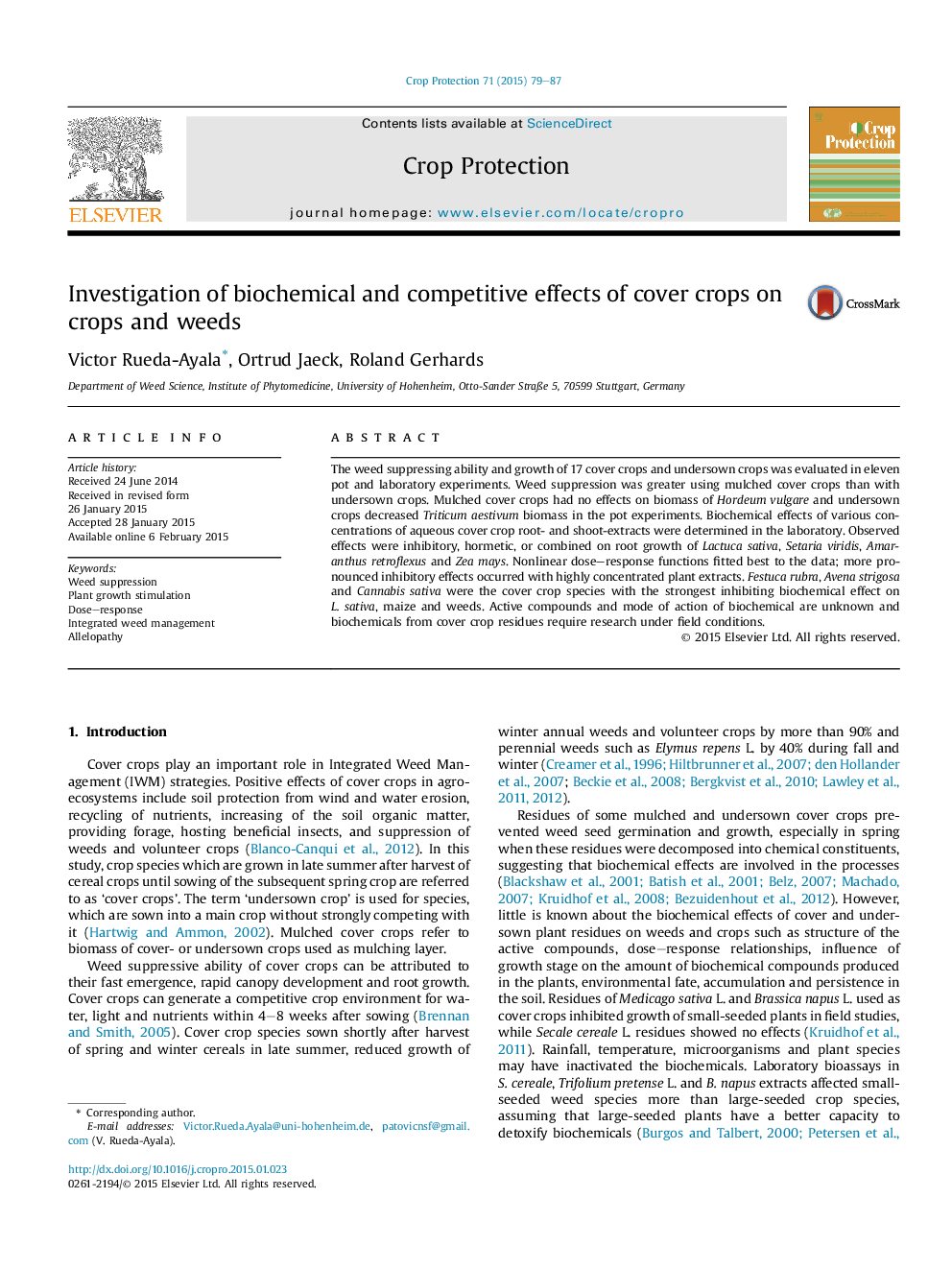| Article ID | Journal | Published Year | Pages | File Type |
|---|---|---|---|---|
| 4505716 | Crop Protection | 2015 | 9 Pages |
•Weed suppressing ability of 17 cover crops was evaluated.•Mulched- and undersown cover crops influenced biomass production of cereals.•Shoot/root extracts had inhibitory effects at low doses and hormetic at high doses.•Tested crops can be recommended as cover crops for integrated weed management.•Weed suppression resulted from a combination of competitive and biochemical effects.
The weed suppressing ability and growth of 17 cover crops and undersown crops was evaluated in eleven pot and laboratory experiments. Weed suppression was greater using mulched cover crops than with undersown crops. Mulched cover crops had no effects on biomass of Hordeum vulgare and undersown crops decreased Triticum aestivum biomass in the pot experiments. Biochemical effects of various concentrations of aqueous cover crop root- and shoot-extracts were determined in the laboratory. Observed effects were inhibitory, hormetic, or combined on root growth of Lactuca sativa, Setaria viridis, Amaranthus retroflexus and Zea mays. Nonlinear dose–response functions fitted best to the data; more pronounced inhibitory effects occurred with highly concentrated plant extracts. Festuca rubra, Avena strigosa and Cannabis sativa were the cover crop species with the strongest inhibiting biochemical effect on L. sativa, maize and weeds. Active compounds and mode of action of biochemical are unknown and biochemicals from cover crop residues require research under field conditions.
